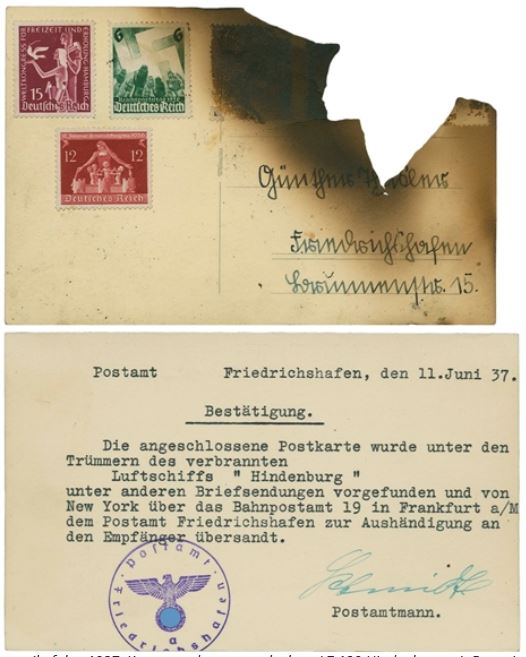
“burnt” postcard from the ill-fated trip in 1937
They are among the most sought-after philatelic covers in the world. The approximately 400 letters and postcards that “survived” the crash of the airship “Hindenburg” (LZ129) in Lakehurst on May 6, 1937, more or less damaged. During landing, a hydrogen fire broke out at the rear of the zeppelin and spread rapidly. Seconds later, it sagged and sank to the ground on fire. Thirty-five of the 97 people aboard the airship died – some in the fire, some jumping from the burning wreckage. But how could this catastrophe have happened? Actually, everything is clear, you think: the hydrogen escaping from a leak at the stern ignited. Yes, that’s right, but what set it on fire? That was unclear for a long time, and only now has another piece of the puzzle been added.
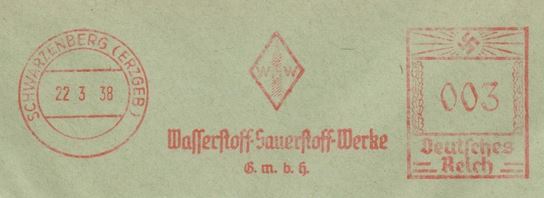
The hydrogen of the airship ignited
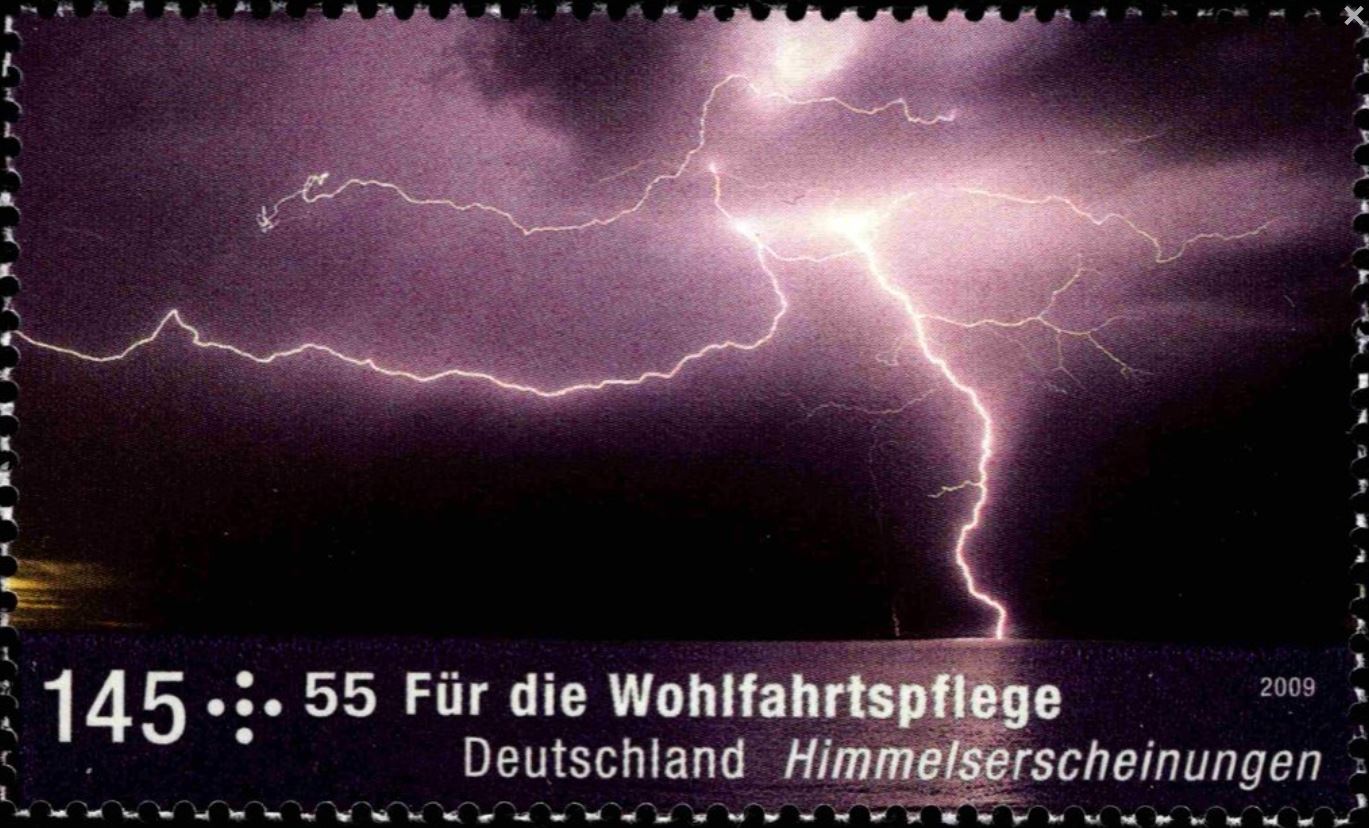
The thunderstorm “charged” the outer hull of the zeppelin.
It was originally thought that the airship’s diesel engines may have produced sparks that then ignited the hydrogen escaping from a leak at the stern. An act of sabotage was also not ruled out. All this could not really be confirmed and in the meantime it is assumed that the electrically charged thunderclouds over Lakehurst played a decisive role. These charged the outer hull of the zeppelin and when the landing rope of the zeppelin touched the ground there was an abrupt discharge which ignited the hydrogen. This is the version accepted so far.
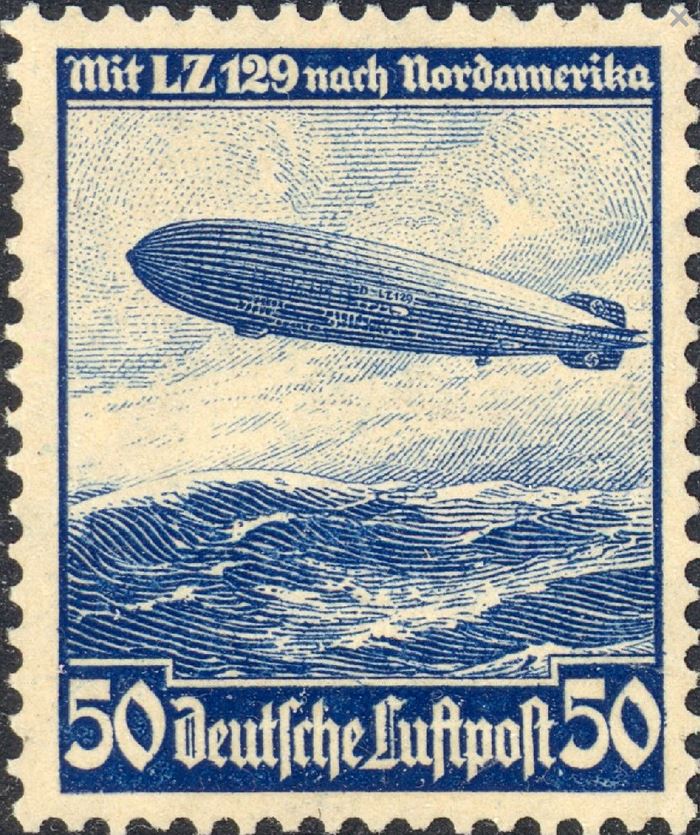
Airmail stamps with the LZ 129
Now, however, an American researcher has reconstructed the outer shell of the zeppelin in the laboratory and has come to some interesting new conclusions. The outer envelope consisted of cotton and linen sheets that had been impregnated several times with layers of cellon, a hardly combustible mixture of cellulose acetate and camphor. To make the envelope reflective and prevent heating by the sun, this mixture also contained aluminum flakes. It is important to note now, however, that this was attached to the Zeppelin’s aluminum frame with cords, and direct contact between the hull and the frame was prevented by wooden spacers to prevent sparks.
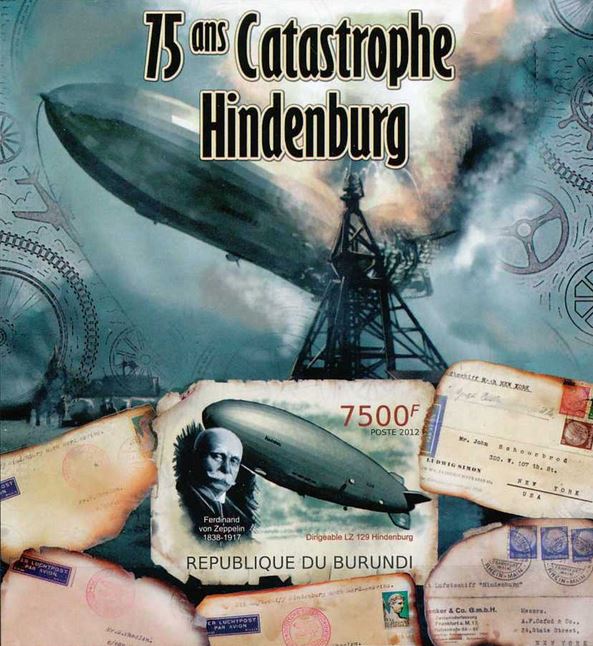
Crashing Hindenburg – note the landing rope at the bow and the erupting fire at the stern
Now, when the researcher energized this model to the extent that would have been expected in the thundery atmosphere at Lakehurst, there were many small discharges, but these could never, ever have been the cause of the fire. The discharges had to be stronger – high-energy local sparks. These also occurred when the model was sprayed with water. The whole thing was accelerated by the ground contact of the anchor rope in the model. Immediately the sparks jumped! Emphasis on immediately. However, the Hindenburg did not burst into flames until 4 minutes after the anchor cable made contact with the ground. In addition, she began to burn at the stern and the anchor rope was at the bow. Something is not quite right with this explanation.
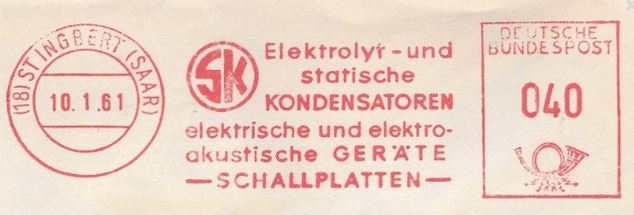
The outer hull became positively charged, the frame became negative – creating a kind of capacitor ……
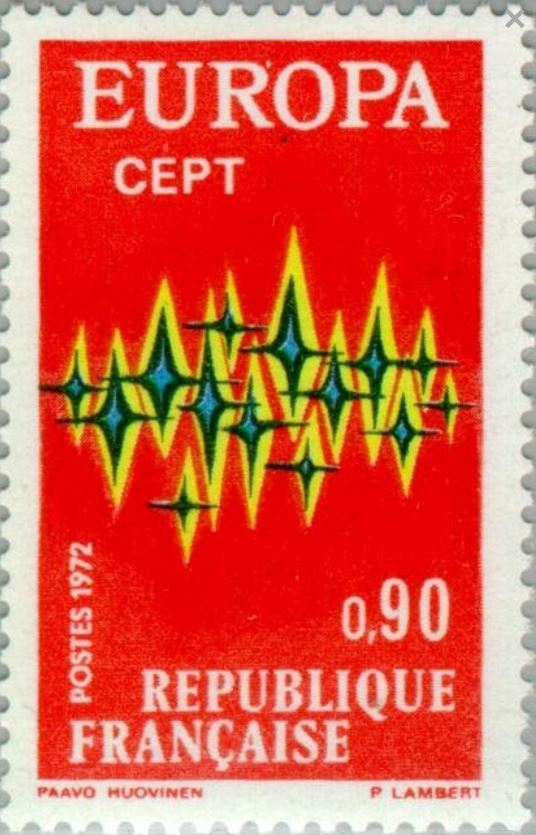
…. which discharged in sparks.
The missing piece of the puzzle was now supplied by the researcher: as he discovered, the zeppelin’s envelope received a positive charge from the electrostatic charge in the clouds. But when the anchor cable connected to the frame then touched the ground, this gave the frame a negative charge. Because the shell and the framework were insulated from each other by the pieces of wood, an increasingly charged electric field was created – like in a capacitor. Wherever the hull and the frame came relatively close to each other, these differences in charge must have built up – as if the zeppelin were littered with hundreds of capacitors. According to calculations, it must have taken pretty much exactly four minutes to charge a capacitor the size of the Zeppelin. This allowed sparks to occur all along the airship and, unfortunately, where the hydrogen leak was.

A chain of independent events led to the disaster.
Thus, 84 years ago in May, the catastrophe began as the result of a chain of unfortunate circumstances: the coincidence of unfavorable weather with a well-intentioned design – the wooden insulation between the hull and the frame, which probably ended up doing exactly the opposite of what it was supposed to prevent in this constellation.
https://xxwww.scinexx.de/news/technik/raetsel-der-hindenburg-geloest/
https://www.felzmann.de/zeppelinpost.aspx
